How to Find the Best Rugs in the UK

Selecting the perfect rug for your home or office can make a significant difference in the overall look and feel of your space. A well-chosen rug can add colour, texture and warmth and tie a room's decor together.
However, with so many options available, finding the best rug in the UK can be a challenging task. From materials and size to colour and design, there are many factors to consider when selecting the perfect rug.
Here are some tips to help you find the best rugs:
Determine the Purpose
When selecting a rug, consider where you want to place it and its primary function. For instance, a living room rug might be used to create a cosy, comfortable atmosphere while also adding an element of style. On the other hand, an outdoor rug for a hallway or entryway might be more focused on durability and ease of cleaning.
Consider the Size
Measure the space where you intend to place the rug and choose a size that fits well. A rug that is too small can look out of place and make the room appear unfinished, while a rug that is too large can make the room look cluttered and overwhelming. As a general rule, a rug should be large enough to fit under all furniture legs in a room.
Choose the Right Material
Rugs come in a variety of materials, each with its own unique texture, durability, and maintenance needs. Some common rug materials include:
Wool: Wool rugs are soft, warm, and durable, making them ideal for bedroom and living room rugs.
Cotton: Cotton rugs are lightweight and easy to clean, making them great for high-traffic areas like kitchens and entryways.
Silk: Silk rugs have a luxurious feel and a lustrous sheen, but they are delicate and require special care.
Jute: Jute rugs are eco-friendly and add a natural, rustic element to a room, but they can be rough on bare feet.
Consider your lifestyle and the room's purpose when choosing a material.

Consider Your Cleaning Routine
Different rugs require different levels of maintenance and cleaning. If you have pets or young children, you may want to choose a washable rug that is easy to clean and maintain. Look for rugs that are made from durable materials and can be spot-cleaned or washed in a machine. Avoid rugs that require professional cleaning or are difficult to clean, as they may not be practical for your lifestyle. Irrespective of the type of rug you want, you can certainly find something for your needs at The Rugs. Check it out today.
Select the Colour and Design
Rugs come in a variety of colours and designs, so consider the overall style of your room when selecting a rug. Neutral colours like beige, grey, and cream can create a calming atmosphere and complement a wide range of decor styles. Bold colours and patterns can add visual interest and personality to a room. If you're unsure which colour or pattern to choose, look for inspiration from the room's existing decor, such as wall colour or furniture.

Mix and Match
Don't be afraid to mix and match different rugs, as this can create a layered, eclectic look in your space. However, it's important to choose rugs that complement each other in terms of colour and style. Look for rugs that have similar patterns or colour schemes, or choose one rug as a focal point and build around it with complementary rugs.
Set a Budget
Rugs can range from affordable to quite expensive, so make sure to set a budget before you start shopping. Consider the size, material, and design when determining your budget. Remember that a higher-priced rug may be more durable and long-lasting than a cheaper one, so consider the cost-per-use over time.
Read Reviews
Before making a purchase, read reviews from other buyers who have purchased the same rug. Reviews can provide valuable information about the rug's quality, durability, and overall value. Look for reviews that mention factors like shedding, colour accuracy, and ease of cleaning to get a better sense of what to expect.
Conclusion
Remember that a well-chosen rug can add warmth, texture, and colour to your space, tying together the room's decor and creating a cohesive, inviting atmosphere. By following these tips, you can find the best rug for your space that fits your style, budget, and needs.
Top 10 Best Rugs in the UK: Elevating Your Home Decor
Discover the finest rugs available in the UK market, with The Rugs offering exceptional choices:
- Wool Berber: Durable and naturally insulating
- Persian-inspired: Timeless elegance with intricate patterns
- Jute: Eco-friendly option with rustic charm
- Shag: Ultra-plush comfort for a cosy atmosphere
- Geometric: Modern designs for contemporary spaces
- Sisal: Natural fibre perfect for high-traffic areas
- Flatweave: Versatile and easy to maintain
- Vintage-look: Adds character with a distressed appearance
- Abstract: Artistic flair for statement interiors
- Indoor/Outdoor: Durable options for versatile use
The Rugs offers a wide selection of these top-rated styles, ensuring you find the perfect rug for your home.
Best Rugs in the UK for Living Room: Creating Comfort and Style
Transform your living space with these outstanding rug options from The Rugs:
- Large Wool Rugs: Ideal for defining seating areas and adding warmth
- Patterned Cotton Rugs: Lightweight and easy to clean, perfect for casual settings
- Silk Blend Rugs: Luxurious sheen for an elegant touch
- Textured Loop Pile: Durable and visually interesting for high-traffic living rooms
- Neutral Toned Rugs: Versatile options that complement various decor styles
The Rugs' collection includes these top choices, ensuring you find the perfect rug to enhance your living room's comfort and style.

Luxury Carpet Brands UK: Indulgence Underfoot
While we can't mention specific brands, The Rugs offers a range of luxury carpets that rival the best in the UK:
- Traditional Craftsmanship: Carpets made with time-honoured techniques
- Innovative Designs: Combining cutting-edge technology with exquisite patterns
- Premium Materials: Using high-quality fibres like New Zealand wool or silk blends
- Natural Fibre Specialities: Unique textures and eco-friendly options
- Bespoke Creations: Custom-made carpets to suit your specific needs
The Rugs' luxury carpet selection offers superior quality and innovative designs to elevate your home's flooring.
Top 10 Best Carpet in the UK: Quality Flooring Solutions
The Rugs offers an extensive range of top-quality carpets, including:
- Wool Twist: Durable and naturally stain-resistant
- Nylon Loop Pile: Ideal for high-traffic areas
- Saxony: Luxuriously soft, perfect for bedrooms
- Polypropylene: Budget-friendly and easy to clean
- Wool Mix: Combines durability of synthetic with the luxury of wool
- Berber: Looped style, great for casual spaces
- Velvet: Smooth, dense pile for a luxurious feel
- Sisal-look: Synthetic alternative to natural sisal
- Textured Pattern: Adds visual interest and hides marks
- Smart Fibre: Eco-friendly option with built-in stain resistance
Each type offered by The Rugs provides unique benefits, catering to different needs and preferences.
Best Carpet in the UK for Living Room: Comfort Meets Practicality
The Rugs presents top carpet choices for your living room, balancing comfort, durability, and style:
- Medium Pile Wool: Offers comfort and durability
- Low Pile Nylon: Easy to clean and maintain in high-traffic areas
- Patterned Polypropylene: Hides stains and adds visual interest
- Textured Loop Pile: Durable and adds depth to the room
- Wool-Nylon Blend: Combines natural beauty with synthetic durability
Consider factors like foot traffic, maintenance requirements, and your overall decor style when selecting from The Rugs' extensive collection.

Luxury Carpet Brands UK: The Pinnacle of Flooring Elegance
The Rugs offers luxury carpets that compete with the best UK brands, featuring:
- Sustainable Wool Carpets: Eco-friendly options without compromising on quality
- Custom-Made Selections: Tailored carpets to suit your specific requirements
- Innovative Designs: Unique patterns and textures for discerning tastes
- Handmade Natural Fibre Carpets: Artisanal quality for a truly luxurious feel
- Distinctive Runners and Rugs: Statement pieces to elevate your interior design
The Rugs' luxury carpet collection embodies premium materials, expert craftsmanship, and unique designs.

Best Carpet for High-Traffic Family Room: Durability Meets Style
For busy family rooms, The Rugs offers durable carpet options that withstand heavy use:
- Commercial-Grade Nylon: Extremely durable and stain-resistant
- Low Pile Wool: Natural resilience and easy to clean
- Frieze (Twist) Carpet: Hides footprints and vacuum marks
- Solution-Dyed Polyester: Colorfast and resistant to fading
- Olefin (Polypropylene) Loop Pile: Affordable and highly stain-resistant
These carpets from The Rugs are designed to maintain their appearance and structure even in the busiest of family rooms, ensuring your floor looks great for years to come.
People Also Asked
How do you tell a good quality rug?
Look for dense pile, tight weave, and natural fibers. Check the knot count for hand-knotted rugs. A good quality rug should feel substantial and have even coloration.
How to find good quality rugs?
Shop at reputable dealers, research brands, and read customer reviews. Look for rugs made with natural materials and hand-knotted construction for higher quality.
What to consider when choosing a rug?
Consider the room's size, traffic level, existing decor, and your budget. Think about material durability, ease of cleaning, and color/pattern that complements your space.
Which type of rug is best?
The best rug type depends on your needs. Wool rugs are durable and luxurious, silk rugs are elegant but delicate, while synthetic rugs offer affordability and easy maintenance.
How to tell if a rug is expensive?
Expensive rugs often have higher knot counts, use premium materials like silk or wool, and feature intricate designs. They may also have certifications or come from renowned manufacturers.
How can you tell if a Turkish rug is good quality?
Look for hand-knotted construction, natural dyes, and high knot density. Quality Turkish rugs have intricate patterns, rich colors, and a soft yet durable texture.
What makes a rug luxurious?
Luxurious rugs often feature high-quality materials like silk or fine wool, intricate designs, high knot counts, and expert craftsmanship. They may also have historical or artistic significance.
What is the best thickness for a rug?
The ideal thickness depends on the rug's purpose. Generally, a thickness between 1/4 to 1/2 inch is suitable for most areas, balancing comfort and practicality.
How can you tell high quality carpet?
High-quality carpets have dense, tightly packed fibers, uniform color, and resilience when pressed. Look for natural materials and reputable brands with good warranties.
What shape rug is best?
The best rug shape depends on your room layout. Rectangular rugs are versatile, round rugs work well in small spaces or under round tables, while runners are ideal for hallways.
Should a rug be darker or lighter?
This depends on your decor goals. Darker rugs can ground a space and hide stains, while lighter rugs can make a room feel larger and brighter. Consider your room's lighting and existing color scheme.
How to tell the material of a rug?
Examine the fiber texture, sheen, and burn test a small sample if possible. Wool feels springy, silk is smooth and cool, while synthetic fibers often have a uniform appearance.
How to tell a good quality rug?
Look for tight weaves, even patterns, and rich, consistent colors. Quality rugs have sturdy edges, lie flat, and feel dense and substantial when handled.
Which country is best for rugs?
Countries renowned for rug-making include Iran (Persia), Turkey, India, and Morocco. Each has unique styles and techniques, with Persian rugs often considered among the finest.
How much does a high quality rug cost?
Prices vary widely, but high-quality rugs can range from $500 to $5000 or more for larger sizes. Hand-knotted, antique, or designer rugs can cost tens of thousands of dollars.
How do you judge a good rug?
Assess the material quality, construction technique, knot density, color consistency, and overall design. A good rug should feel substantial and have even wear if it's vintage.
How do you know if a rug is expensive?
Expensive rugs often have higher knot counts, use premium materials, feature complex designs, and may have historical or artistic value. Brand reputation and certifications also indicate value.
What is the best quality material for a rug?
Wool is often considered the best overall material for rugs due to its durability, softness, and natural stain resistance. Silk is prized for its luxurious feel and sheen.
How do I choose a rug that matches?
Consider your room's color scheme, furniture style, and overall aesthetic. Choose a rug that complements rather than matches exactly. Consider pattern scale and texture as well.
Where is the best rug from?
The "best" rug origin depends on personal preference, but Persian (Iranian), Turkish, and Moroccan rugs are highly regarded for their quality and design traditions.
How can you tell if a rug is dirty?
Look for visible stains, dull colors, or a gritty feel when touched. Lift a corner and check for dirt underneath. A musty smell can also indicate a dirty rug.
How thick should a good rug be?
A good rug is typically 1/4 to 1/2 inch thick. However, thickness can vary based on the rug's purpose and style. Plush area rugs might be thicker, while flatweave rugs are thinner.
What is the best indicator of carpet quality?
The best indicator is often the fiber density or face weight. Higher quality carpets have denser, more tightly packed fibers and feel more substantial underfoot.
How can you tell if a rug is natural or synthetic?
Natural fibers like wool feel warm and springy, while synthetics often feel cooler and smoother. A burn test can help: natural fibers smell like burning hair, synthetics melt like plastic.
How can you tell a good rug?
Examine the weave tightness, color consistency, and overall craftsmanship. Good rugs have even patterns, sturdy edges, and maintain their shape when folded.
What determines the quality of a rug?
Quality is determined by materials used, construction method, knot density, dye quality, and overall design. The reputation of the manufacturer or region of origin also plays a role.
Which country produces the best rugs?
While subjective, Iran (Persia), Turkey, and India are often cited for producing exceptional rugs. Each country has unique styles and techniques renowned in the rug-making world.
Which rugs are the best in the world?
Some of the best rugs include Persian Tabriz, Turkish Hereke, Indian Agra, and Moroccan Beni Ourain. These are prized for their craftsmanship, materials, and design heritage.
What is the average price of a good rug?
Prices vary widely, but a good quality 8x10 foot rug might range from $500 to $3000. Hand-knotted or antique rugs can be significantly more expensive.
What makes a fine high quality rug?
High-quality rugs feature premium materials, expert craftsmanship, high knot density, natural dyes, and intricate, well-executed designs. Durability and aesthetic appeal are key factors.
What type of rug is the most durable?
Wool rugs are generally the most durable due to their natural resilience and stain resistance. Nylon is the most durable synthetic option, known for its strength and easy maintenance.
What rugs do designers use?
Designers often use a mix of vintage and contemporary rugs, favoring high-quality materials and unique designs. Popular choices include Persian, Moroccan, and modern abstract rugs.
How are rugs so expensive?
Expensive rugs reflect high-quality materials, labor-intensive hand-knotting, artistic design, and often historical or cultural significance. Rarity and brand reputation also influence price.
Why are some rugs so cheap?
Cheap rugs often use synthetic materials, are machine-made, and may have lower knot counts. They might also use lower-quality dyes or have simpler designs.
What is a good quality Persian rug?
A good quality Persian rug has high knot density, uses natural wool or silk, features intricate patterns, and employs natural dyes. It should have a rich history and be hand-knotted.
How do I choose a sustainable rug?
Look for rugs made from natural, renewable materials like wool or jute. Consider eco-friendly dyes, fair trade certifications, and brands committed to sustainable practices. Durability is also key for sustainability.
Who makes the best quality of carpets in the UK?
The UK boasts several manufacturers renowned for producing top-quality carpets. These companies combine traditional craftsmanship with modern technology to create premium flooring solutions. Look for manufacturers with a rich heritage, often dating back centuries, as they tend to offer carpets known for their durability, design, and use of high-grade materials. The best UK carpet makers prioritize sustainable practices and innovative techniques, ensuring their products meet the highest standards of quality and style.
Who makes the best rugs in the world?
The title of best rug maker is subjective, but certain regions are globally recognized for exceptional quality. Persian rugs from Iran are often considered the gold standard, particularly those from historic cities known for their weaving traditions. For contemporary designs, look to European and American makers who blend traditional techniques with modern aesthetics. The best rug makers worldwide are characterized by their attention to detail, use of premium materials, and innovative designs that stand the test of time.
How much should a good quality rug cost in the UK?
In the UK, the cost of a good quality rug can vary widely depending on size, material, and craftsmanship. For a mid-range, quality rug, expect to pay between £200 to £800 for a standard living room size (160x230cm). High-end, handmade rugs can start from £1,000 and go up to several thousand pounds. Factors like wool quality, knot density, and design complexity significantly influence the price. Consider the rug as an investment piece that will last for years when budgeting for your purchase.
How to tell if a rug is high quality?
Identifying a high-quality rug involves examining several key factors. Check the material - natural fibers like wool or silk typically indicate better quality. Inspect the knot density; more knots per square inch usually mean a more durable and detailed rug. Look for even, tight weaving and consistent patterns. High-quality rugs often have a substantial weight and feel dense underfoot. The colors should be rich and even, with intricate designs showing clear definition. Reputable certifications can also be indicators of quality.
How can you tell if carpet is good quality in the UK?
In the UK, assessing carpet quality involves several factors. Look for carpets made from 100% wool or high-quality synthetic fibers like nylon. Check the pile density - a denser pile generally indicates better quality and durability. The backing should be sturdy and well-attached. UK-specific quality indicators include the Wool Rich Quality Mark for wool carpets and the British Standards Institution (BSI) certification. Consider the carpet's tog rating for insulation properties, especially important in the UK climate. A comprehensive warranty is also a good indicator of quality.
What town in the UK is famous for carpets?
Kidderminster, located in Worcestershire, England, is historically famous for its carpet industry. Known as the "Carpet Capital of England", Kidderminster has been a center of carpet manufacturing since the 18th century. The town's carpet-making heritage is celebrated at the Museum of Carpet, which showcases the history and techniques of carpet production. Although the industry has declined in recent decades, Kidderminster still maintains its reputation and some carpet manufacturing presence, continuing to be associated with quality floor coverings.
How much is good carpet UK?
The cost of good carpet in the UK varies based on quality, material, and brand. For a mid-range, good quality carpet, expect to pay between £20 to £40 per square metre. High-end wool carpets can range from £30 to £100 per square metre. Installation costs typically add another £7 to £12 per square metre. Factors like underlay quality, room size, and any necessary floor preparation can affect the overall price. It's wise to budget for quality underlay as well, as this significantly impacts the carpet's feel and longevity.
How often should you replace carpet UK?
The frequency of carpet replacement in the UK depends on several factors, but generally, a good quality carpet should last 5 to 15 years. High-traffic areas may need replacement sooner, while bedrooms can last longer. Signs it's time to replace include visible wear patterns, persistent odours, or stains that won't come out. UK-specific factors to consider include the impact of damp weather on carpet longevity and the higher wear in areas where outdoor shoes are commonly worn indoors. Regular professional cleaning can extend your carpet's life, but eventually, replacement becomes necessary for both aesthetics and hygiene.
Related Blog Posts
How To Choose a Rug for Your Home ?
Related Rug Collections




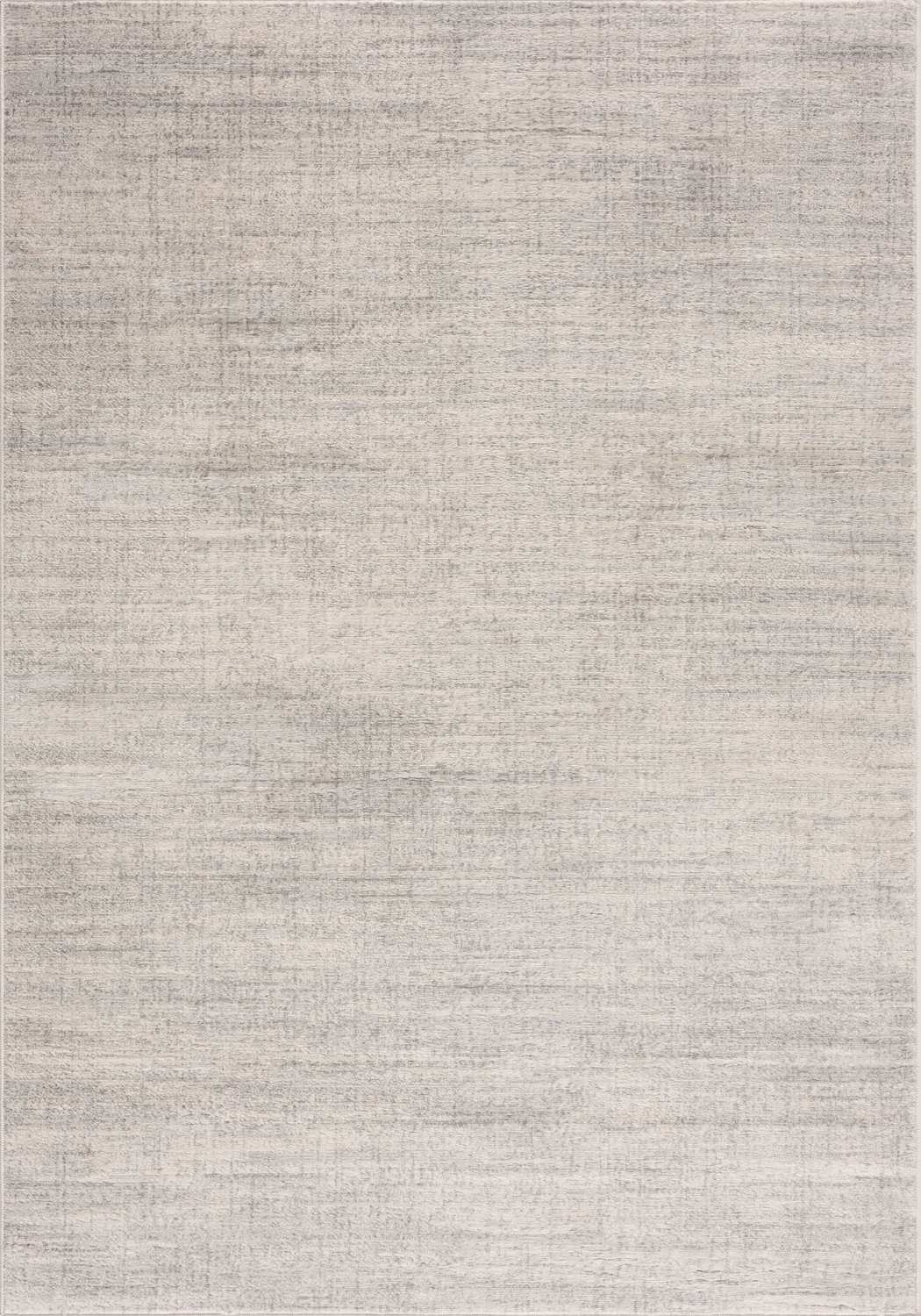
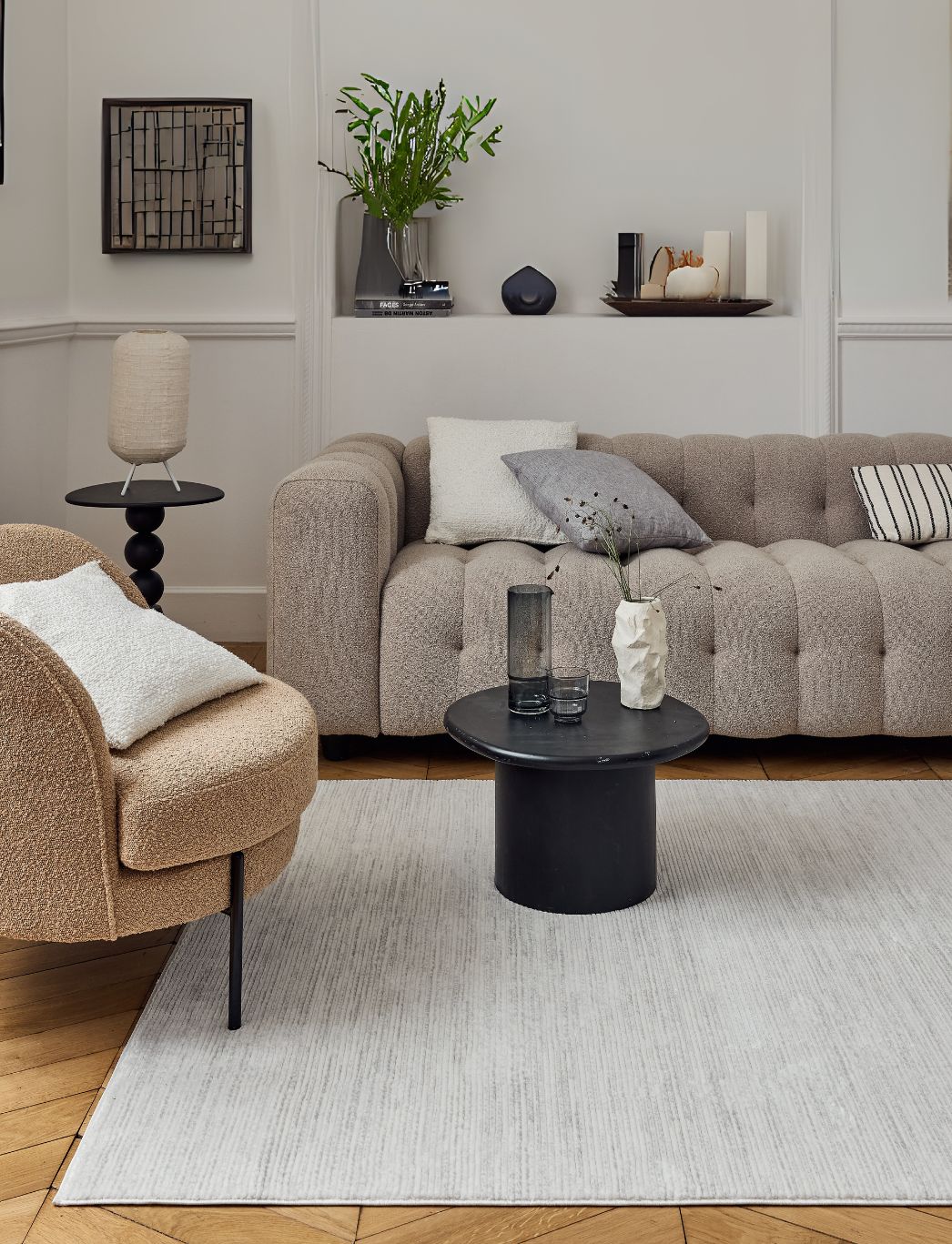
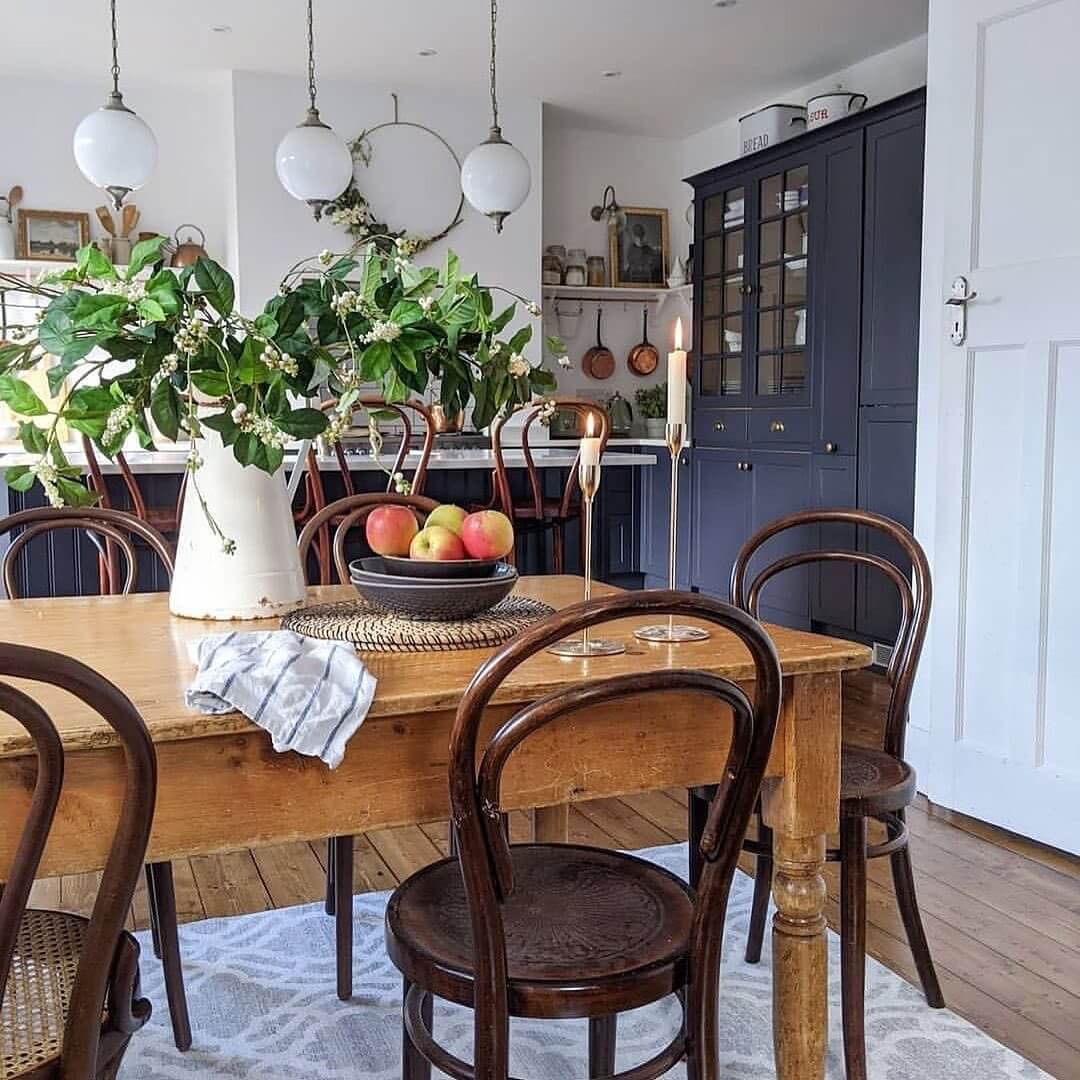
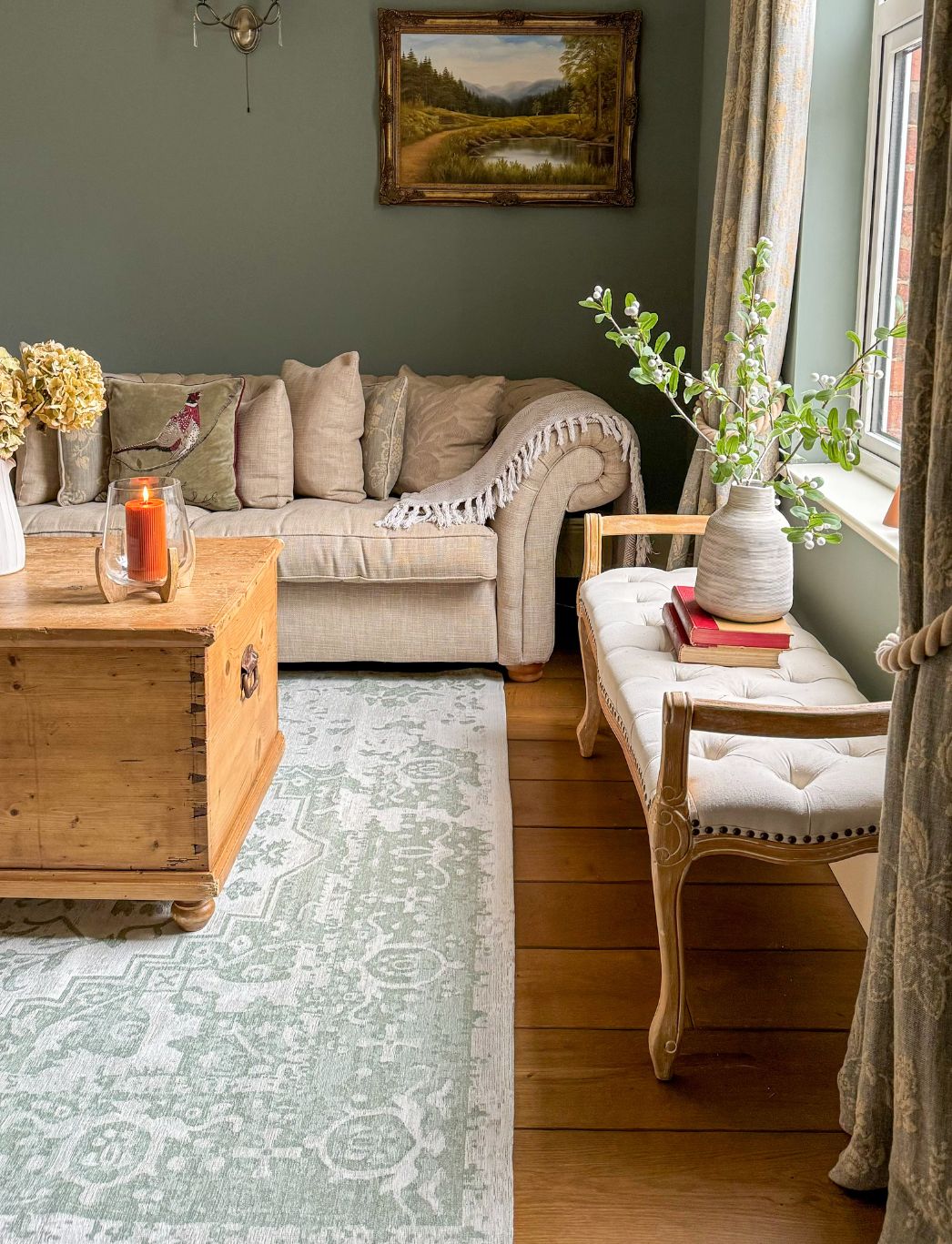
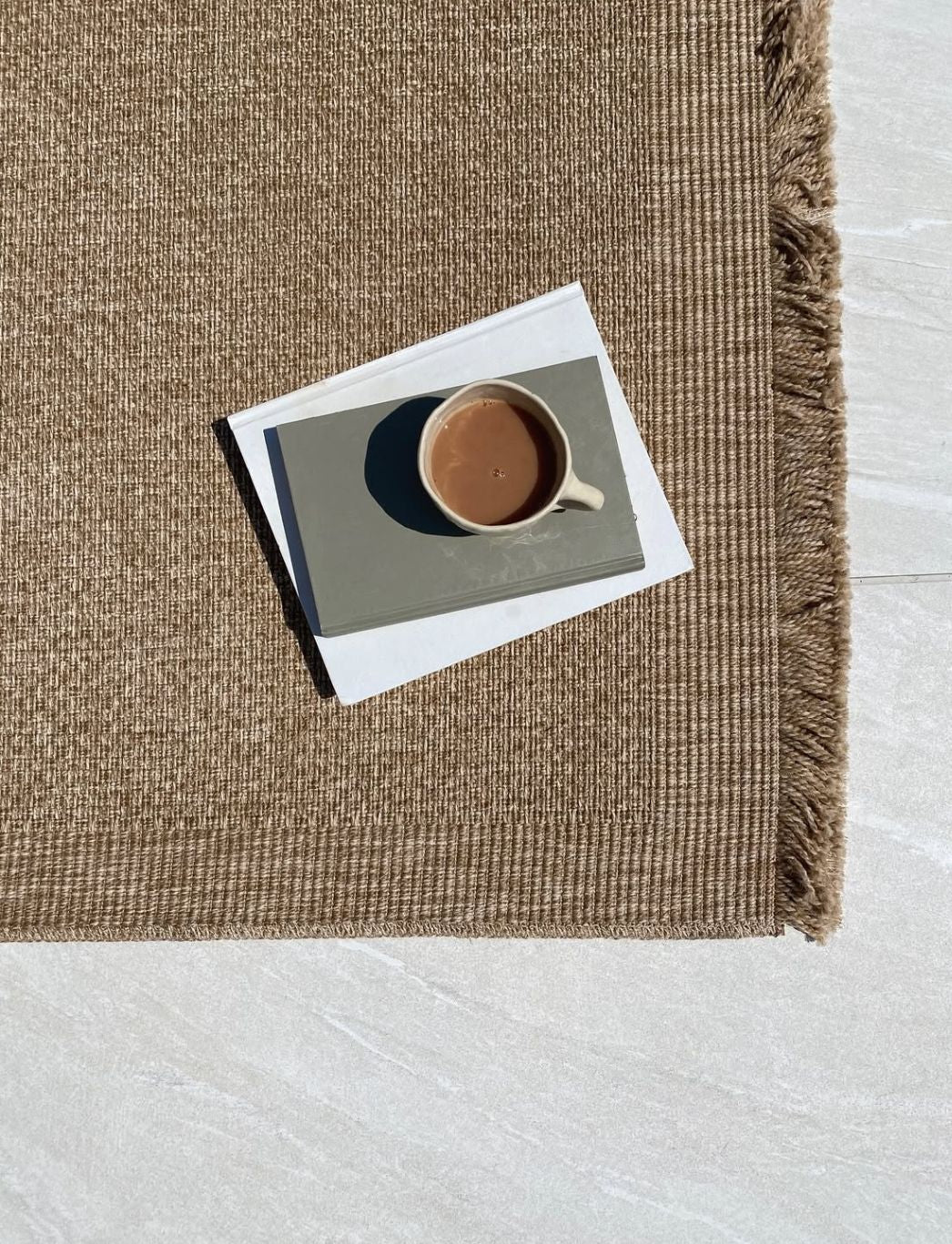
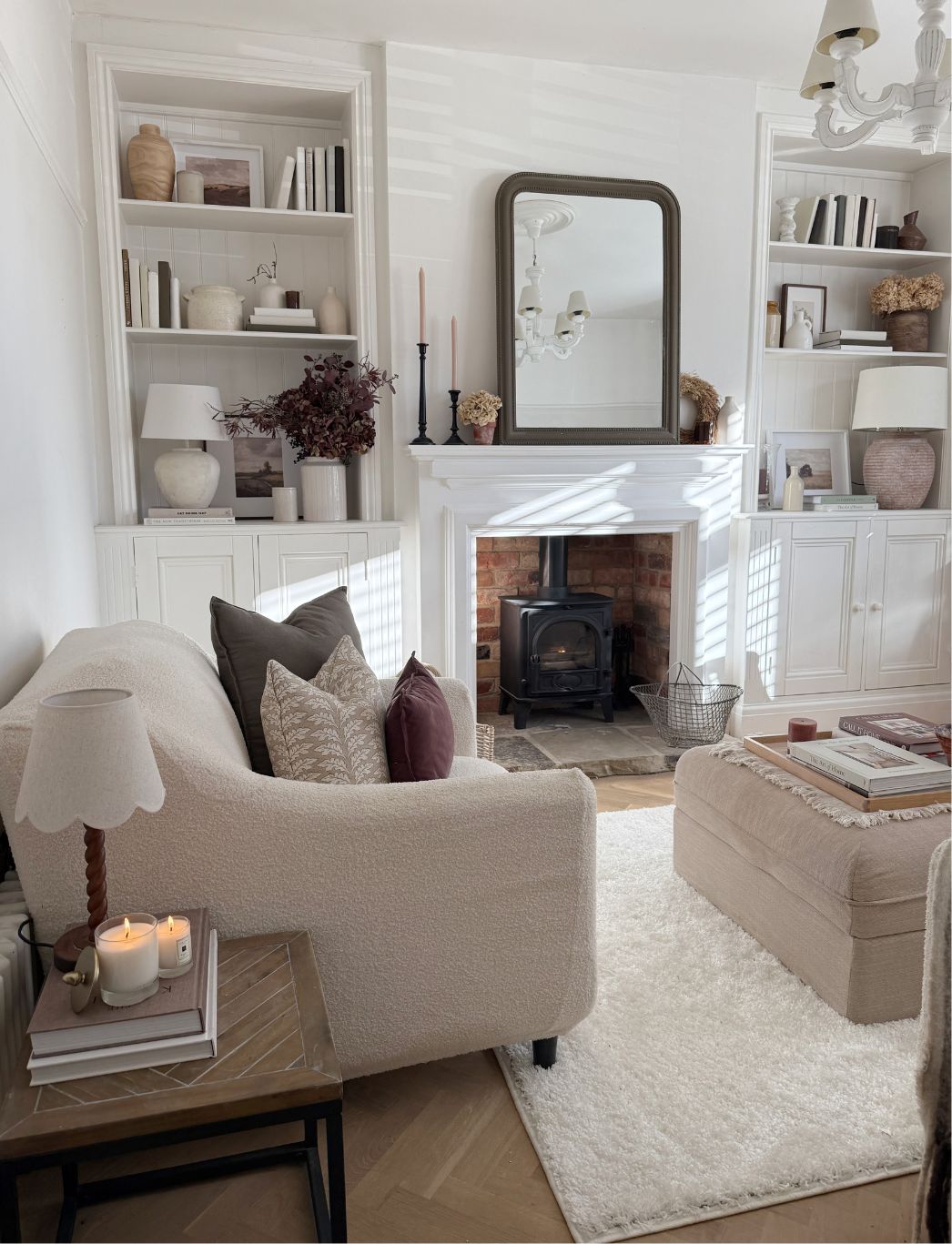
Leave a comment